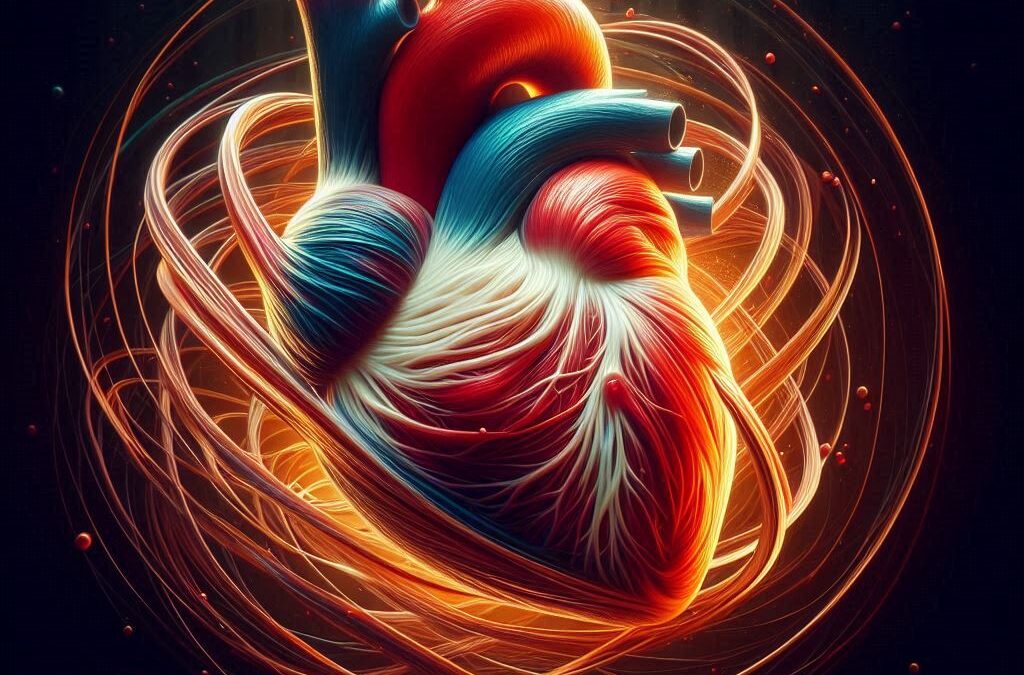Categories: Health & Wellness, Science & Nature
In a Nutshell:
Did you know your heart is more than just a pump? When unfolded, its muscle forms a spiral, like a natural vortex, making it a marvel of engineering and efficiency. This twist enhances blood flow, reduces energy use, and supports heart health. Discover how the heart’s unique structure could shape future heart treatments and deepen our understanding of cardiovascular health.
The Heart: A Powerful Muscle with a Unique Shape
While traditionally known as a four-chambered pump, recent studies reveal that the heart has an intriguing structure beneath the surface. Research by Dr. Francisco Torrent-Guasp, a Spanish cardiologist, uncovered the heart’s spiraling, vortex-like arrangement, which was previously unknown. Dr. Torrent-Guasp’s work in the 1970s led to the revelation that the heart muscle could be unwrapped into a single, elongated muscle band that twists into a helix. This vortex structure suggests that the heart is designed for energy efficiency, maximizing the force with which it pumps blood throughout the body.
How the Vortex Shape Enhances Heart Function
- Improved Blood Flow: The heart’s spiral structure enables it to contract in a twisting motion, creating a “wringing” effect that pushes blood more effectively from the ventricles. Research published in European Heart Journal supports this, showing that the heart’s twisting motion enhances its ejection fraction, the percentage of blood ejected per beat.
- Energy Efficiency: According to studies from The Journal of Cardiovascular Development and Disease, the heart’s vortex arrangement requires less energy to perform each contraction. This setup allows the heart to work with reduced strain, suggesting that the vortex shape is a natural adaptation for longevity and endurance.
- Enhanced Circulation: The heart’s vortex pattern also reduces turbulence within the circulatory system, improving blood flow and minimizing strain on blood vessels. Dr. Torrent-Guasp’s findings continue to influence cardiovascular research, with implications for understanding heart efficiency and blood flow dynamics.
Implications for Heart Health
- Heart Surgery Techniques: Advances in heart surgery now take this vortex function into account. By respecting the heart’s natural twist during procedures, surgeons aim for techniques that could preserve the heart’s efficiency and longevity.
- Biomimetic Device Design: Engineers are creating heart-assist devices that mimic the heart’s twisting motion, allowing for energy-efficient designs that could better support patients with heart failure. Mimicking this natural vortex structure in medical devices may improve functionality and outcomes for those needing mechanical heart assistance.
Conclusion
The heart’s unique vortex shape emphasizes the incredible efficiency and elegance of the human body’s design. Dr. Torrent-Guasp’s discovery is reshaping our understanding of cardiovascular health and highlights the heart’s innate ability to balance power and efficiency. As research continues, this knowledge could transform approaches to heart health, offering new ways to treat cardiovascular conditions with respect for the heart’s intricate, spiraling structure.
References:
- Torrent-Guasp, F., et al. European Heart Journal. Study on the heart’s twisting motion and its effects on blood flow.
- The Journal of Cardiovascular Development and Disease. Analysis of the heart’s vortex arrangement and energy efficiency.

